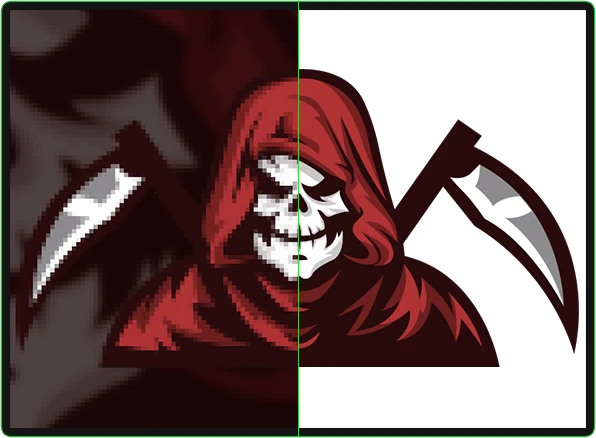Why Vector Logos are Essential for Sublimation Apparel Printing
Sublimation printing is a technique that uses heat to transfer dye directly into a fabric. This process is used to create intricate, high-resolution, full-color designs on apparel. In this context, vector graphics are preferred for a few key reasons:
Why Vector Logos are Essential
- Scalability: Vector images can be scaled up or down indefinitely without losing quality. This is crucial for sublimation printing where designs might need to be resized to fit different apparel sizes. Raster images, on the other hand, consist of a fixed set of pixels, and when scaled up, can become pixelated and lose clarity.
- Crispness: Since vector images use mathematical equations to render graphics, the edges are always sharp and well defined. This leads to clean, clear, and professional-looking prints. Raster images can appear blurry or pixelated, particularly if they are enlarged beyond their original size.
- Color Management: Vector graphics allow for easy color modifications. In sublimation printing, where colors play a crucial role in the final look of the apparel, being able to accurately manipulate colors is a huge advantage. Raster images do not offer this level of flexibility.

Raster vs Vector Graphics
- Raster Images: Raster images are composed of a grid of pixels, each assigned a color. These are the most common type of image and include formats like JPEG, PNG, and GIF. Raster images are great for complex images with lots of color variation, such as photographs. The downside of raster images is that they lose quality when enlarged beyond their original resolution.
- Vector Images: Vector images are generated from mathematical equations that define geometric primitives like polygons, lines, curves, circles, and rectangles. Because they are not pixel-based, vector images can be scaled infinitely without loss of quality. This makes vector graphics ideal for logos, which can be displayed at a variety of sizes. Common formats for vector graphics include SVG, AI, and EPS.
In the context of logos, using vector graphics ensures that the logo can be resized for various applications - from a small logo on a business card to a large banner or billboard - while retaining its sharpness and clarity. In contrast, a raster-based logo might look great on a small scale, but become blurry or pixelated when enlarged. For this reason, when branding your company you should make sure your logo designer is creating your graphic in vector format and providing the source files.